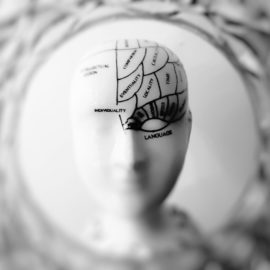

This article is an excerpt from the Shortform book guide to "Caste" by Isabel Wilkerson. Shortform has the world's best summaries and analyses of books you should be reading.
Like this article? Sign up for a free trial here .
What can we make of the results of the 2016 American election? What does Trump’s victory say about the psychology of the American nation?
Many considered the 2016 American election to be an uncommon event. While some voters thought the choice was a no-brainer, they weren’t prepared for the divisiveness and discussions of race brewing below the surface of American society.
Keep reading for more about the 2016 American election and the psychology behind its outcome.
The 2016 American Election
In the 2016 American election for president, the American public had two options for who would be their new leader. In one corner, there was the highly experienced woman representing the moderate and liberal factions of society. In the other was a conservative man using hateful rhetoric about anyone different or contrarian and a history of inappropriate and illegal behavior against women. The choice became one of supporting equality, moral values, and justice or protecting a way of life long dead but awaiting a resurrection by those who’d grown increasingly frustrated with the costs of diversity and equality in their lives.
The Division of American Life
The demographic landscape of America had vastly changed over the last several decades and would continue to do so. The 2008 U.S. Census reported that by 2042, whites would lose the distinction as the majority race. This news was shocking for a country that had operated under a white majority since the first Europeans landed on the continent. And emphasizing this loss of status was the election of a black president the same year. Many white Americans felt the anxiety of losing their place in their country, and the ensuing anger and resentment burned bright.
The consequences of that ignited flame was an uncovering of deep-rooted racism. As the race of the 2016 American election picked up momentum, the Republican candidate became the spokesperson for all the rage and fear felt by many white Americans for some time. His racist rhetoric spawned an ideology that empowered them to feel comfortable waving their prejudice flags. His followers became fiercely loyal and vocal about their similar desire to return America to a time when white supremacy was the norm. He wanted to reclaim what was “stolen,” and he advocated doing so in whatever way was necessary.
The 2016 American election forced many people to consider what they believed America should look like, and many realized they believed in white supremacy. And with a candidate touting rhetoric supporting this belief, people finally felt free to acknowledge their feelings publicly. Other Trump supporters weren’t quite so blatant with their motivations and perhaps didn’t understand them themselves.
People tend to make split-second decisions about who to vote for in the voting booth. They assess their lives and situations, identifying the traits that make up their identities, and unconsciously rank them in order of importance in society. Whichever candidate aligns most with their most powerful traits usually gets their vote. Therefore, when a majority of the dominant caste entered the voting booths in 2016, the candidate who supported their highest ranked characteristic—their whiteness—received their vote. Trump promised to restore power to the white race, and the promise was too enticing to pass up.
The most surprising representation of this psychology were white women voters. Instead of supporting the first female presidential candidate and helping to make history for their gender, 53% voted for a man accused of multiple counts of sexual assault and misconduct. Promoting their caste became more important than breaking the glass ceiling in the White House.
Caste also explains the efficiency with which the Republican party is able to rally their base of supporters. The GOP can simply push their supremacy agenda by stirring up fears of subordinate encroachment and emphasizing race pride. The Democrats, however, have a more difficult task. They have to bridge the divide between the black voters who provide critical support and the dominant members who would bring status to their party. This tactic rarely works because their party is associated with justice and equality. So while they want the wealthy majority vote, they also have to risk offending them with issues that concern their base, such as housing, discrimination, and police brutality.
You only have to look at the voting trend data from the 2016 American election to see a blueprint for caste in America. The votes for Trump included 62% white men, 53% white women, 32% Latinx men, 25% Latinx women, 13% black men, and 4% black women. The vote for Hillary Clinton included 31% white men, 43% white women, 63% Latinx men, 69% Latinx women, 82% black men, and 94% black women (the lowest-status group in the country). These results held regardless of socioeconomic status or level of education, but white voters without college educations overwhelmingly voted Republican.
These results show that the national psychology behind the 2016 American election outcome had more to do with caste traditions than anything else. The group threat mentality was the most powerful influence on voters in 2016, and Trump recognized that and used it to fuel his campaign.

———End of Preview———
Like what you just read? Read the rest of the world's best book summary and analysis of Isabel Wilkerson's "Caste" at Shortform .
Here's what you'll find in our full Caste summary :
- How a racial caste system exists in America today
- How caste systems around the world are detrimental to everyone
- How the infrastructure of the racial hierarchy can be traced back hundreds of years






